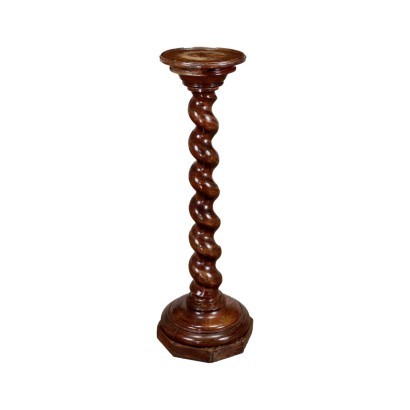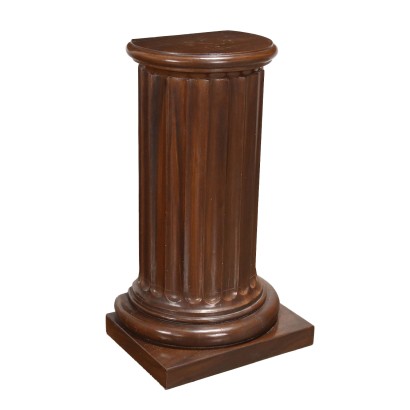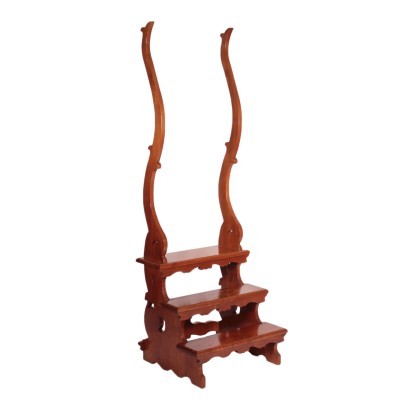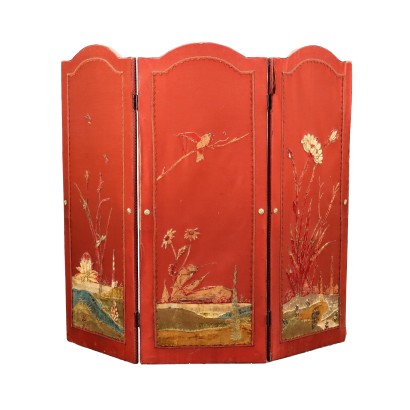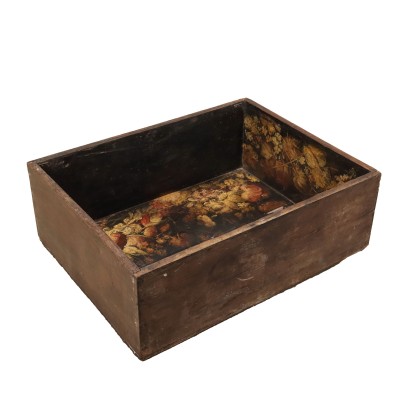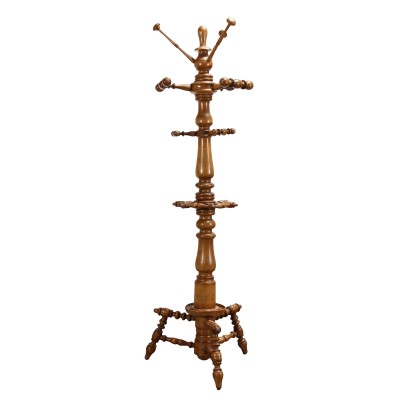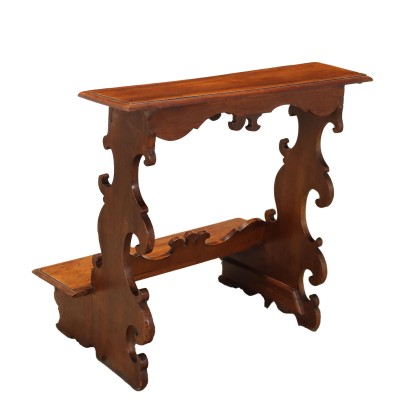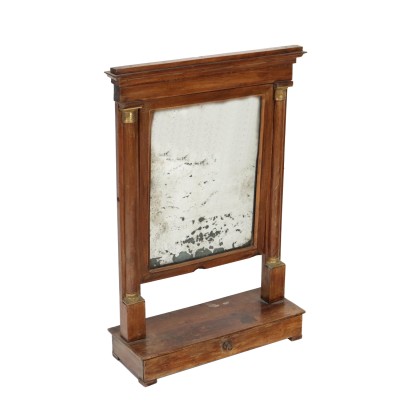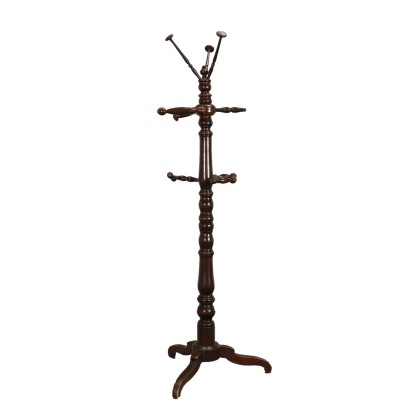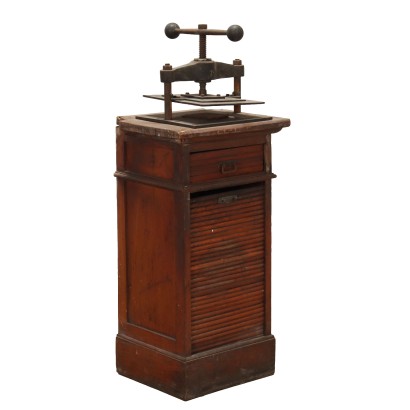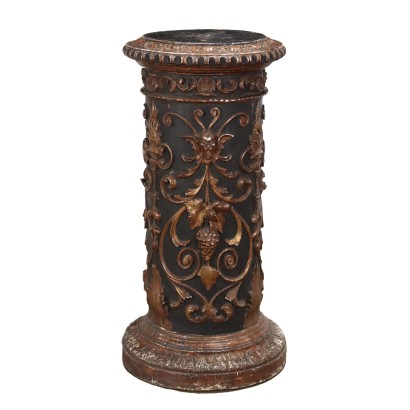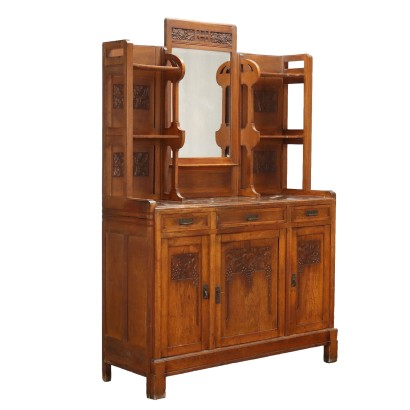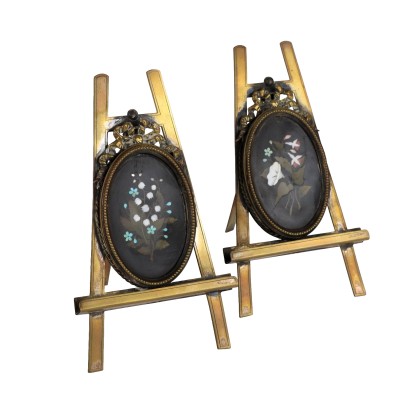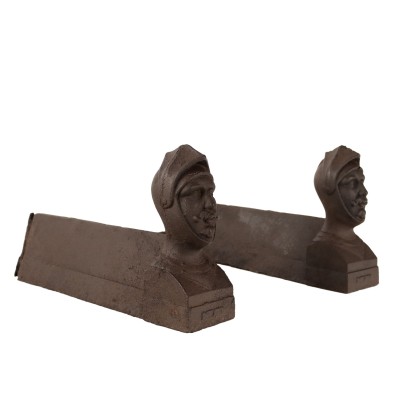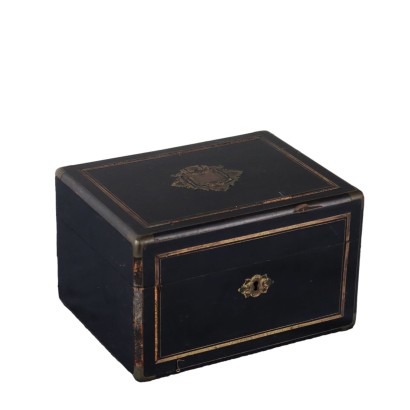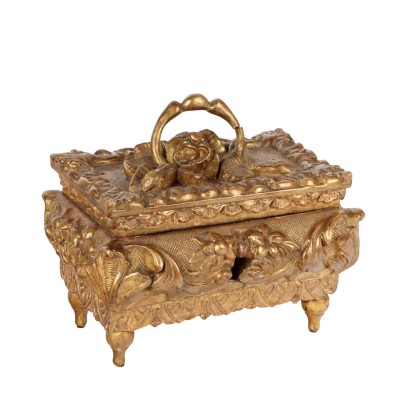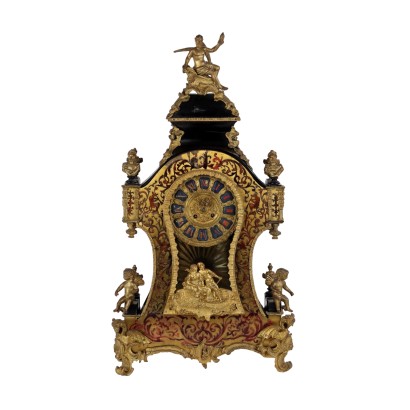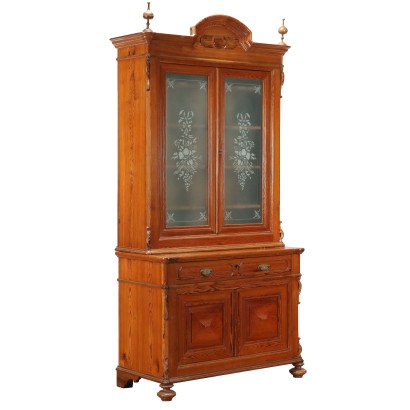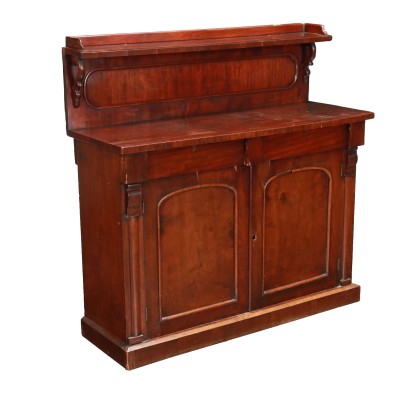Neo-Baroque Column Cedar Elm Italy XIX Century
Features
Style: Neo-Baroque (1860-1890)
Age: 19th Century / 1801 - 1900
Origin: Italy
Description
Neo-Baroque column, twisted elm shaft; cedar base and upper shelf.
Product Condition:
Product that due to age and usage requires restoration and resumption of polishing.
Dimensions (cm):
Height: 110,5
Width: 36
Depth: 36
Diameter: 29
Additional Information
Style: Neo-Baroque (1860-1890)
Anticipated in England in the first half of the 19th century on reminiscences of the Elizabethan style, it returns in vogue around 1870, but interpreted in a very free way.At the beginning it represents a response to the frivolity of the neo-rococo, but soon expires in a pompous and eclectic style that combines severe sixteenth-century elements with early seventeenth-century sculptural decorations.
The furniture is solid, richly carved and carved, in wood with a dark patina.
Masks, cornices, columns carved with herms that make up typical architectural structures of Renaissance palaces, are the elements that characterize the neo-Renaissance style.
It was an era in which we saw the revival and the revival of ancient forms with a typically Renaissance taste, large carvings were used for an all-round, deeper and three-dimensional vision, the use of feral legs in the caissons and in the wardrobes, squares and moldings, frames, ashlar and nails, Romanesque ornamental motifs but also acanthus leaves, cartouches and lion heads.
Often in this period the furniture is built using ancient materials and parts of Renaissance furniture.
Walnut was often used but also less hard essences such as poplar or others since they were often darkened and presented in black.
Find out more with the insights of our blog:
The Neobarocco in a large table of '800
Age: 19th Century / 1801 - 1900
19th Century / 1801 - 1900Main essence:
Cedar
Coniferous wood, originally from Lebanon in its most widespread variant, was already used by the ancient Egyptians in the construction of boats and coffins. The biblical quotation that notes that Solomon's palace had 45 columns of cedar is significant. Light in color, with a beautiful reddish vein and a characteristic and appreciated fragrance, it was used by French cabinetmakers especially for inlays and also in the creation of small objects.Elm
Very hard and compact wood, which comes from ulmus campestris . It is distinguished by its reddish brown color. It was mainly used for rustic furniture in France, Holland and Scandinavia. In England, however, it was also used a lot in inlay work.Other customers have searched:
Altri mobili antichi, toilette antica, inginocchiatoio antico, baule antico, inginocchiatoio, mobili antiquariato, mobili antichi, bauli, cassapanca..
Se ti interessano i mobili d'antiquariato Scopri qui tutte le presentazioni dei prodotti d'antiquariato più belli, eleganti e preziosi su FineArt by Di Mano In Mano
Leggi di più
Sull'antiquariato in generale dai un'occhiata anche a:
Classic Monday: da un pezzo dei nostri magazzini alla storia dell'antiquariato
L'antiquariato dalla A alla Z: il Dizionario dell'Antiquariato
Il dizionario dell'antiquariato - Lastronatura
Il dizionario dell'antiquariato - Mascherone
Il dizionario dell'antiquariato - Natura morta
Il dizionario dell'antiquariato - Opificio
Il dizionario dell'antiquariato - Pastiglia
Il dizionario dell'antiquariato - Savonarola
Il dizionario dell'antiquariato - Rosone
Infine, dai un'occhiata alle nostre rubriche di divulgazione sulla storia delle arti decorative e d'arredo:
Epoche
Lavorazioni e tecniche
Mostre ed Eventi
Protagonisti
Leggi di più
Sull'antiquariato in generale dai un'occhiata anche a:Classic Monday: da un pezzo dei nostri magazzini alla storia dell'antiquariato
L'antiquariato dalla A alla Z: il Dizionario dell'Antiquariato
Il dizionario dell'antiquariato - Lastronatura
Il dizionario dell'antiquariato - Mascherone
Il dizionario dell'antiquariato - Natura morta
Il dizionario dell'antiquariato - Opificio
Il dizionario dell'antiquariato - Pastiglia
Il dizionario dell'antiquariato - Savonarola
Il dizionario dell'antiquariato - Rosone
Infine, dai un'occhiata alle nostre rubriche di divulgazione sulla storia delle arti decorative e d'arredo:
Epoche
Lavorazioni e tecniche
Mostre ed Eventi
Protagonisti
Alternative proposals
It could also interest you



